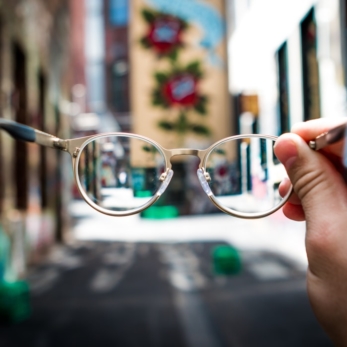Testing and research lie at the heart of all best-laid plans to develop a high-converting website, but sometimes you have to set the data aside, embrace your inner Sigmund Freud and pair up your experiments with a little bit of good old-fashioned psychology.
If you’ve hit a brick wall when it comes to boosting website conversions, why not see if the following principles help hone your website design?
What you will learn:
1. The Law of Prägnanz
This famous law describes the way we prefer experiences to take on a simple order and are naturally averse to ideas and designs that are too complex.
A fine principle to apply to website development – particularly when you consider that best-selling computer game franchise The Sims tested the reduction of their initial four calls to action down to one and discovered conversions improved by at least 43%.
Or that mobile business company Device Magic tested a cleaner version of their homepage with all bullets and videos removed, only to find CTR to the sign-up page rose by 35%.
2. The Principle of Cost vs Benefit
This principle explores the way that the perceived cost and benefit of an action influences human behaviour. For example, a user debating whether or not to download an ebook from your website might well be happy with the perceived cost of entering an email address but flinch from completing multiple fields of personal information or filling in a long-winded survey. In 2010, Expedia put this principle to the test by trying out two different versions of their billing address collection fields. The removal of one optional field made the form look shorter and led to an increase in revenue of $12m (approximately £9m).
3. Face perception
Face perception refers to the human instinct of understanding and interpreting a face – an instinct we begin acting on from birth.
Faces grab attention and can be used to highlight key elements on a page – perhaps angled towards your CTA or positioned beside a special offer.
Faces can also help to make that emotive connection with users – just look at the efforts of online art shop Medalia Art which switched from pictures of paintings on their homepage to pictures of the artists in an attempt to increase CTR to the relevant pages.
The result?
A CTR increase of 95.4%.
4. Fitts’ Law
Taking the scientific angle, this law of human movement predicts the amount of time taken to move to and select a target, dependent on the distance to and width of said target.
In terms of your website, this could mean enlarging the target of a certain button to improve CTR or positioning it with the aim of minimising mouse movement.
Actions you would like to reduce, such as cancellations, could be achieved by working the rule in reverse i.e. by using smaller target buttons or placing them at a distance requiring greater mouse movement. Car manufacturer Hyundai saw a 62% increase in test drive and brochure requests when they enlarged their CTA buttons as well as a 208% increase in CTR.
To find out more about how JustCoded’s developers could benefit your next project, contact our team today.


